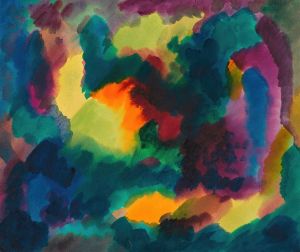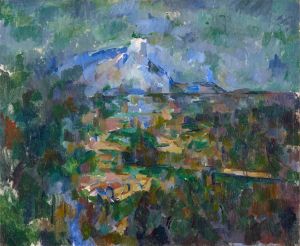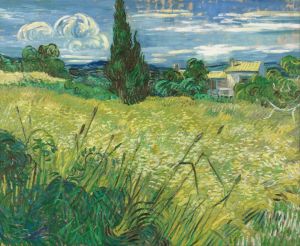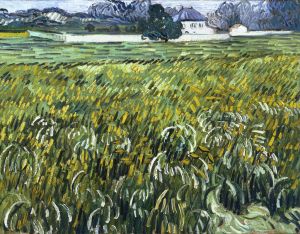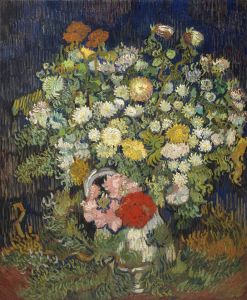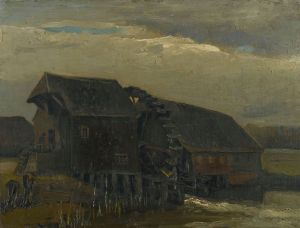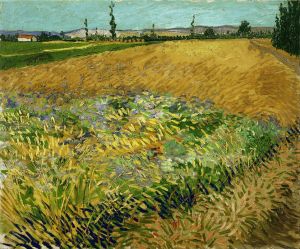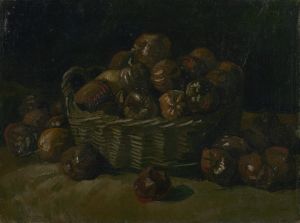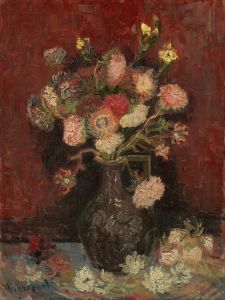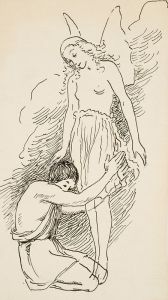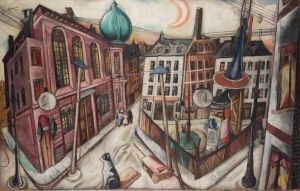
View of Arles
A hand-painted replica of Vincent van Gogh’s masterpiece View of Arles, meticulously crafted by professional artists to capture the true essence of the original. Each piece is created with museum-quality canvas and rare mineral pigments, carefully painted by experienced artists with delicate brushstrokes and rich, layered colors to perfectly recreate the texture of the original artwork. Unlike machine-printed reproductions, this hand-painted version brings the painting to life, infused with the artist’s emotions and skill in every stroke. Whether for personal collection or home decoration, it instantly elevates the artistic atmosphere of any space.
"View of Arles" is a painting by the renowned Dutch artist Vincent van Gogh. Created in 1888, this work is part of Van Gogh's prolific period in Arles, a town in the south of France where he produced some of his most famous and influential works. The painting captures the essence of the landscape and the vibrant atmosphere of the region, showcasing Van Gogh's distinctive style and his fascination with the natural world.
Vincent van Gogh moved to Arles in February 1888, seeking the bright light and vivid colors of the south of France, which he believed would enhance his artistic expression. During his time in Arles, Van Gogh was incredibly productive, creating over 200 paintings, 100 drawings, and numerous watercolors. This period is often considered one of the most creative and significant phases of his career.
"View of Arles" depicts a panoramic view of the town and its surroundings. The composition includes elements typical of the Provençal landscape, such as fields, trees, and the distant silhouette of the town's buildings. Van Gogh's use of bold, expressive brushstrokes and his vibrant color palette are evident in this work, reflecting his emotional response to the scenery and his innovative approach to capturing light and atmosphere.
The painting is characterized by its dynamic composition and the interplay of colors. Van Gogh employed a range of hues to convey the richness of the landscape, using contrasting colors to create a sense of depth and movement. The sky, often a significant element in Van Gogh's works, is rendered in shades of blue and white, suggesting a bright, sunny day. The fields and vegetation are depicted in various greens and yellows, highlighting the fertility and vitality of the region.
Van Gogh's time in Arles was also marked by his collaboration with fellow artist Paul Gauguin. The two artists shared a studio, known as the Yellow House, and influenced each other's work. However, their relationship was tumultuous, culminating in a dramatic incident in December 1888, when Van Gogh famously cut off part of his own ear. Despite the personal challenges he faced, Van Gogh's artistic output during this period remained remarkably high.
"View of Arles" is one of many paintings that illustrate Van Gogh's deep connection to the landscape and his ability to transform ordinary scenes into extraordinary works of art. His innovative use of color and technique had a profound impact on the development of modern art, influencing countless artists and movements that followed.
Today, Vincent van Gogh is celebrated as one of the most important and influential figures in Western art history. His works, including "View of Arles," are held in high esteem and continue to be studied and admired for their emotional intensity, technical mastery, and unique vision. The painting serves as a testament to Van Gogh's enduring legacy and his extraordinary ability to capture the beauty and complexity of the world around him.





